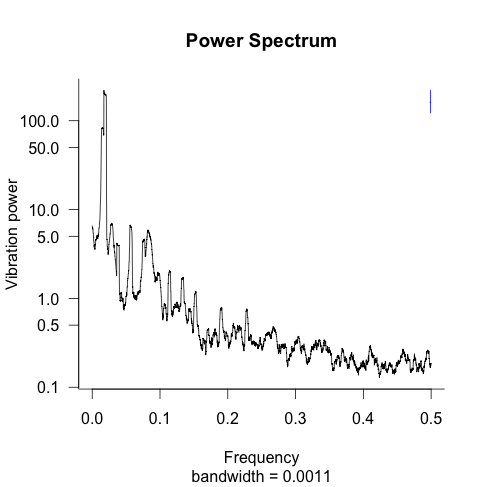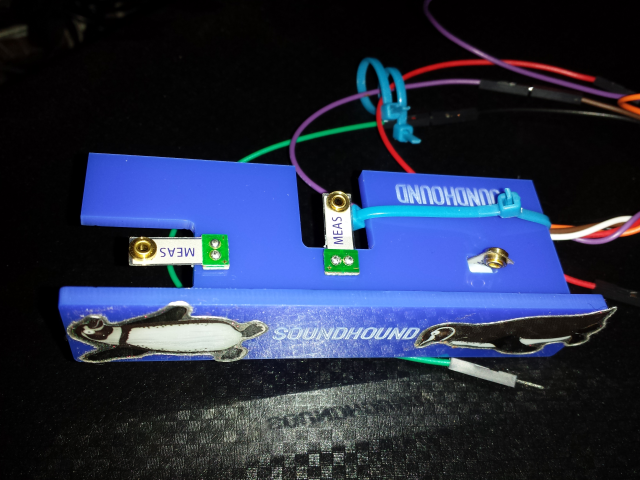Archive
Been invaded by mysterious sounds? You need SoundHound
Team SoundHound (Gary, Pavel and yours truly) were at the Intel Hardware Hackathon last weekend. Hardware hacks are about the peripherals that are available on the day; I grabbed one of everything and we all sat down to play with them and come up with a great gadget to build. At an Intel sponsored event the computers are obviously Galileo and Edison (which is what we ended up using).
The Intel guys had a very fixed idea about how the hackathon was to run and specified that eight projects had to be proposed and selected (by everybody present) on the Friday night and that these would be worked on over the weekend (but we were allowed to change the idea; the logic escaped me). I proposed a vibration detection project to measure the impact of passing vehicles on houses next to busy roads. Nobody on what was to become SoundHound thought this was a great idea, but it was the only idea we had and there was nothing stopping us radically changing our mind over the weekend.
Vehicles generate sound which we can hear, but buildings are damaged by the lower frequency vibrations that we sometimes feel but don’t usually hear. A microphone would be useless, what was needed was a vibration sensor and a packet of piezo vibration sensors, the SEN-09198, was provided. We did not have any amplifiers to boost the signal, so the sensors were wired directly onto the signal pins; this meant that the dynamic range of the signal was about 50 times smaller than the input could handle and our test vibrations were created by banging on the table on which the sensor sat (power spectrum of me doing just that below).

We worked away on the vehicle vibration idea waiting for something better to come along. Some household appliances contain motors that cause them to vibrate, perhaps we could detect these vibrations. The use case here was a fridge next to a wall transmitting vibration into another room which then generated a hard to pin-down noise in that room. Around this time it occurred to us that a ghost detector (everybody knows that walls vibrate when ghosts travel through them) might be a bigger market, after all occult books sell well.
IBM were an event sponsor and had people on-hand to help us set up and use Bluemix, their cloud offering. The Edison board was communicating with our laptops via wifi and this got rerouted so the data was sent to IBM’s cloud storage. Collecting everybodies vibration data meant we could do pattern matching on the power spectrum of the vibration to identify candidates for the device most likely to be generating it (whether the vibration characteristics of different devices is sufficiently different for the pattern matching to be able to distinguish them at some useful level is another matter; I imagine that the shape of a fridge causes its vibration to modulate slightly from the frequency of the local electricity supply).
One of the problems of producing a working demo at a hackathon is being held to a much higher standard of reality. Teams whose output is slideware illustrating the tenuous connection its members have to reality don’t seem to have any trouble getting unquestioning agreement that anything they propose will just work. We were asked how we would obtain the vibration data for different household devices, against which the customer data could be compared; a marketing type capable of convincingly talking about our crowd source solution would have been useful.
Late Saturday afternoon saw team SoundHound out on the streets measuring vehicle vibration. Unfortunately large lorries traveling at speed are thin on the ground in central London, also guys standing next to a laptop with wires attached to something on the ground filming everything that went past had the effect of causing drivers to slow down to low vibration speeds (rather than speeding up to get away from us).
Perhaps we should have gone with the ghost detector sale pitch. The cloud data storage could have been rebranded as The Ethereum data matrix and flashing leds added to the hand-held sensor (the penguins below send the wrong message).
If it is possible to distinguish home appliances based on their vibration characteristics, and a database is created, there is an opportunity for salesmen to systematically check each house/flat ‘listening’ for appliances that are close to failing (motors vibrate more as they wear out): “Hello Sir, your fridge/boiler/air-conditioning is getting old and this week we have a special offer on replacements…”.
The picture below shows our 3-axis vibration sensor (plastic mounting/vibration interface laser cut by Elen from the FabLab, who do brown bag lunch and learn sessions if you are ever in central London). Two axis would probably been enough, and maybe even one, but we had the sensors and wanted to impress.

Recent Comments